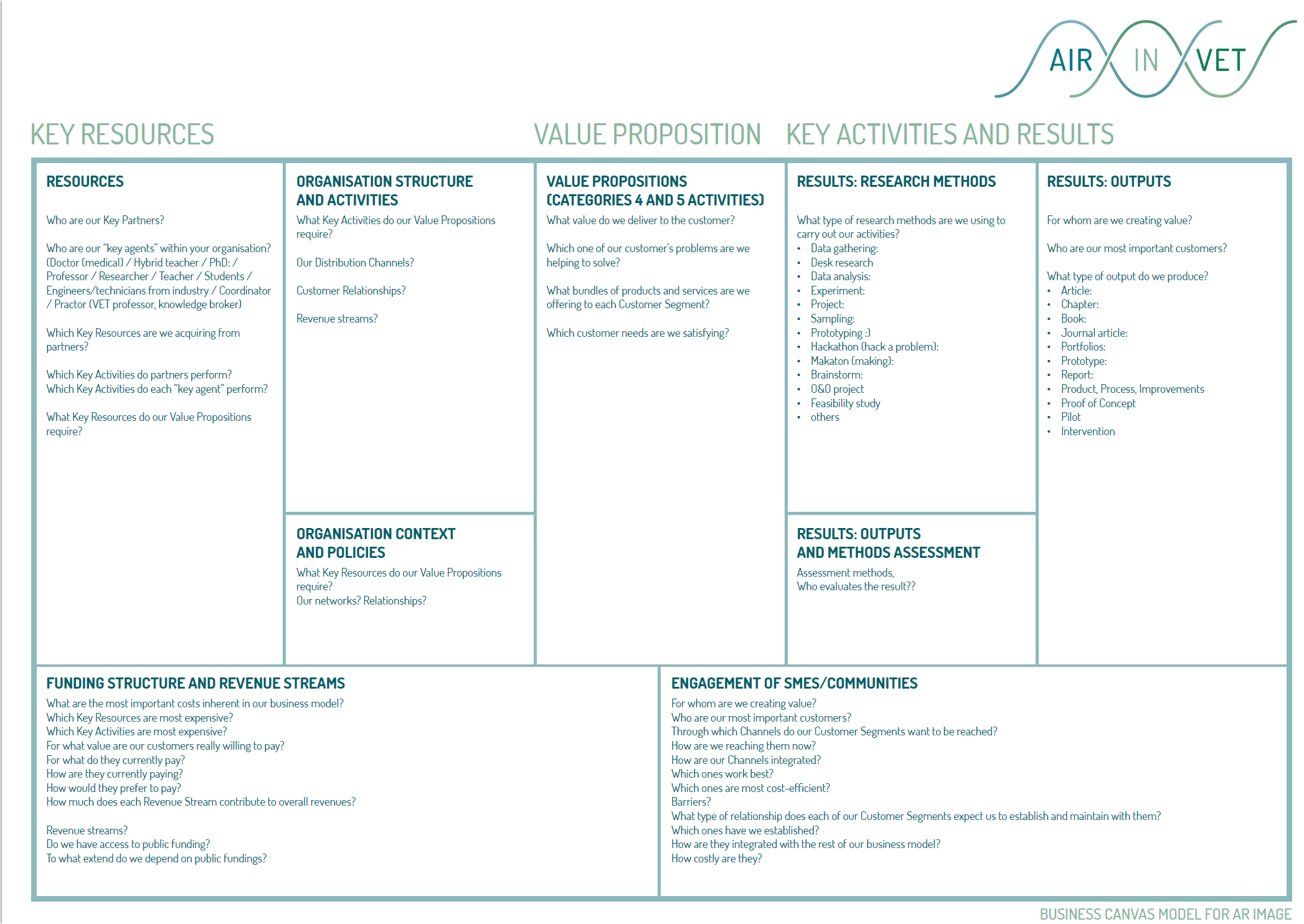Introducing the AIRinVET Business Model Canvas
February 2023
Introducing the AIRINVET Business Model Canvas
To kickstart the mapping process, we established a foundational understanding of the concept of applied research in Vocational Education and Training (VET). This involved conducting a comprehensive landscape analysis, delving into how VET institutions approach applied research across various aspects such as activities, collaborations, fields of study, knowledge transfer, methodologies, resources, student learning, and technology adoption.
We further scrutinized the concept as outlined in the glossary, breaking it down into specific dimensions we aimed to explore. We categorized the activities conducted by VET providers within these dimensions. Our focus was on investigating the activities that a Vocational Education center may engage in, particularly categorizing them into two key areas:
**Category 4**: Implementation and testing of Technologies within the institution (internal). This includes integrating technologies into the curriculum (didactic KETs), testing new technologies and machines, and activities geared towards sustainability and greening.
**Category 5**: Provision of services for companies, encompassing technical assistance for companies and initiatives aimed at addressing real-life production challenges (e.g., test beds, equipment/machine sharing, proofs of concepts, testing, and simulations).
Following the guidelines set forth by the World Federation of Colleges and Polytechnics Applied Research affinity group, we redefined the building blocks for applied research activities within this structure. These building blocks include:
-
Dimension 1: Various types of activities conducted by the organization, briefly described.
-
Dimension 2: Type of organization and its academic profile.
-
Dimension 3: Research methods employed.
-
Dimension 4: Research outputs generated.
-
Dimension 5: Agents involved (relevant for Category 4 and Category 5).
-
Dimension 6: Targets, impact, and assessment methods.
-
Dimension 7: Motivation, mindsets, and incentives.
-
Dimension 8: Strategies employed.
-
Dimension 9: Barriers and enablers.





Subscribe to our newsletter